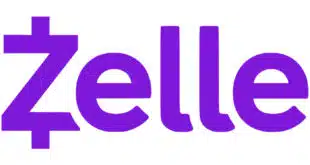By John Stewart
n
The national automated clearing house network enjoyed its second-strongest first-quarter performance in the past five years, with 3.8% transaction growth year-over-year, according to statistics released Monday by NACHA, the network’s administrative agency.
n
Overall, ACH transactions totaled 4.48 billion in the first quarter, up from 4.32 billion in the first quarter of 2013. This is the biggest first-quarter gain in the last five years, with the exception of 2012’s 4.4% increase. The first-quarter surge also follows a comparatively anemic 2.9% increase in last-year’s first quarter.
n
The new growth energy comes as the 40-year-old electronic payments network readies a proposal to speed up payment settlement. The proposal, involving multiple settlement windows, would allow payments to settle the same day they are made, compared to next day under current schedules. If adopted, the new rule could satisfy a growing consumer demand for faster payments and widen the ACH network’s reach in payments markets.
n
Payroll direct-deposit transactions in the quarter accounted for nearly one-third of ACH activity. These credits, under the PPD (prearranged payment and deposit) transaction code, grew 1.7% to 1.39 billion transactions. PPD debits, used by consumers to pay billers and merchants via withdrawals made by written authorization, increased 5.3% to 831.4 million transactions.
n
Sandwiched between these two transaction codes are WEB payments, an e-check used to pay merchants online and for ACH-based mobile payments. This fast-growing category expanded by 10.8% to 875.5 million transactions.
n
WEB transactions are an example of what NACHA calls native electronic payments. These are transactions that are electronic from the start, rather than beginning as checks that are then converted to an ACH format. Such transactions are seen as increasingly important for the ACH as the volume of paper checks steadily dwindles.
n
TEL, another native electronic payment type, grew 10.4% to 101.6 million transactions. These involve payments to merchants authorized by consumers over the phone.
n
By contrast, the biggest check-based standard entry code is ARC, which refers to the electronic conversion of checks consumers send to biller lockboxes. ARC transactions, once larger than those for WEB, totaled 412.2 million in the quarter, down 6.8%.
n
Similarly, POP (point-of-purchase) transactions, for checks consumers present at the point of sale, plummeted nearly 12% to 87.6 million. Another form of store-based check conversion, BOC, fell 6.6% to 40.2 million transactions. Unlike POP, where cashiers convert checks and hand them back to consumers, BOC involves conversion of bundles of checks collected from multiple locations and consolidated in back offices (the code, introduced in 2007, stands for “back-office conversion”).
Cross-border activity was brisk in the quarter, with IAT transactions totaling 13 million, up nearly 16%. This International ACH transaction code, introduced in September 2009, is used for payments to billers and merchants outside the United States.





